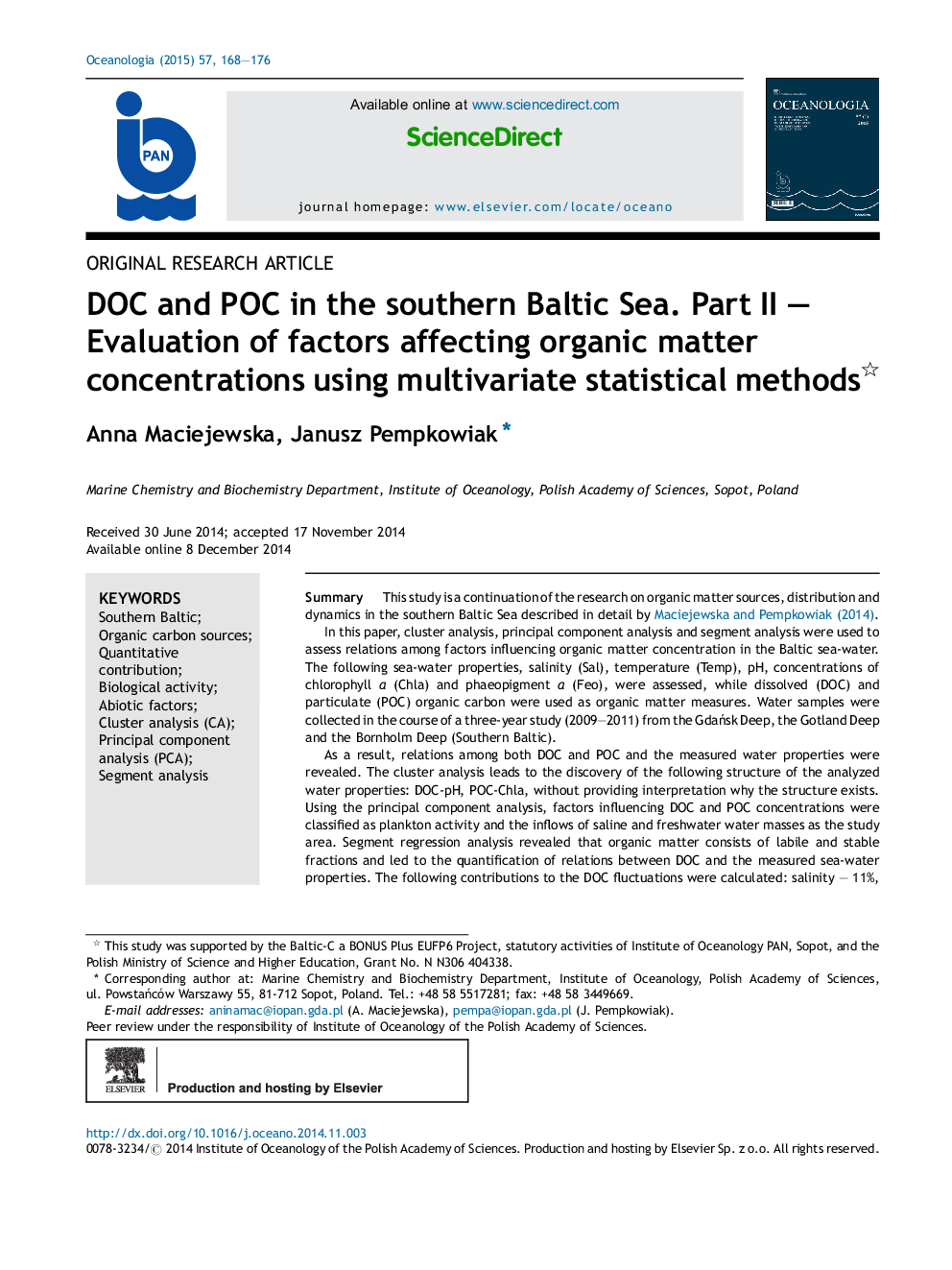| Article ID | Journal | Published Year | Pages | File Type |
|---|---|---|---|---|
| 2069773 | Oceanologia | 2015 | 9 Pages |
SummaryThis study is a continuation of the research on organic matter sources, distribution and dynamics in the southern Baltic Sea described in detail by Maciejewska and Pempkowiak (2014).In this paper, cluster analysis, principal component analysis and segment analysis were used to assess relations among factors influencing organic matter concentration in the Baltic sea-water. The following sea-water properties, salinity (Sal), temperature (Temp), pH, concentrations of chlorophyll a (Chla) and phaeopigment a (Feo), were assessed, while dissolved (DOC) and particulate (POC) organic carbon were used as organic matter measures. Water samples were collected in the course of a three-year study (2009–2011) from the Gdańsk Deep, the Gotland Deep and the Bornholm Deep (Southern Baltic).As a result, relations among both DOC and POC and the measured water properties were revealed. The cluster analysis leads to the discovery of the following structure of the analyzed water properties: DOC-pH, POC-Chla, without providing interpretation why the structure exists. Using the principal component analysis, factors influencing DOC and POC concentrations were classified as plankton activity and the inflows of saline and freshwater water masses as the study area. Segment regression analysis revealed that organic matter consists of labile and stable fractions and led to the quantification of relations between DOC and the measured sea-water properties. The following contributions to the DOC fluctuations were calculated: salinity – 11%, chlorophyll a – 26%, phaeopigment a – 26%, POC – 38% in the growing season and 31%, 33%, 21% and 22% respectively in the non-growing season.
